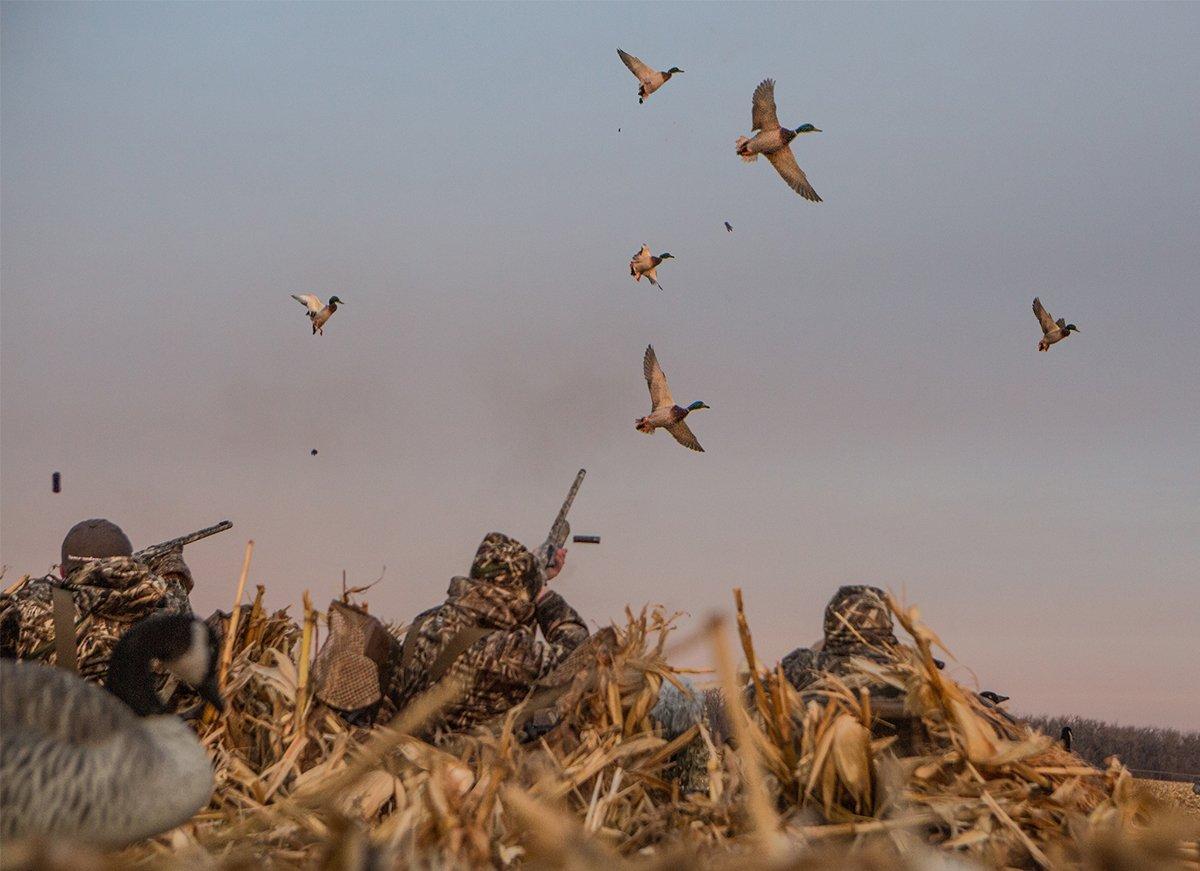Ever Wonder Where Your Shot Goes When You Fan?
I've punched holes in the air all around ducks and geese. Over them? Check. Under them? Yep. Behind them? Certainly. Heck, I've even shot in front of them. And sometimes, I've missed so badly I questioned whether my shells held any shot (cue muffled laughter from my hunting buddies).
Wing-shooting is an art, but it rests in solid science and practical application. Many reasons explain why we miss. Further, experience often reveals where we typically miss. Here are my top whiff placement picks.
Flushing Birds
Usually, we miss flushers by shooting over them — at least I do. Often, we move the gun upward quickly and cover the bird with the barrel, which pushes the shot high. Proper form calls for us to shoulder and swing quickly but ride the bird on the bead. Follow-through will put the shot where it needs to go.
Incomers
Many newcomers hear this advice: With decoying ducks, shoot at their feet.
No, don't. When ducks or geese come right at you, descending slightly, it's again wise to ride the bird on the bead, let instinct take over and follow through naturally. Concentrating on and aiming at their feet often puts our shot string in the water, not the bird.
Here's another tip: If you stink at seemingly easy incomers — and many guys do, actually — stand and flare the birds before shooting. They're really much easier to shoot when they flare straight up or to one side.
Crossers
Now we're into the potentially difficult shots. Most folks, of course, shoot behind crossing birds. Ducks are fast, and geese are deceivingly swift. You simply must shoot where they will be, not where they are when you touch off a round. Many well-meaning folks provide lead instructions or follow-through hints. But really, experience and your natural hand-eye coordination usually reveal the right lead. Just keep that gun moving during and after the shot.
Distance can be troublesome at times. A crossing bluebill at 40 yards requires vastly more lead than one strafing your decoys at 10. In these situations, it's possible to shoot in front of the bird. But don't think about that. Bore holes into the target with your eyes, and swing aggressively. And if you're unconvinced you have enough lead, swing more.
Overhead Passers
This shouldn't be a difficult shot. However, we make it tough at times because we swing the gun through the bird but stop when we lose sight of it. Sporting clays tip: Offset your gun and swing slightly so you can see your barrel and the target simultaneously. That way, it's much easier to maintain a good swing and follow through on the shot. Also, don't wait too long. Many hunters — myself included — often want to shoot the bird when it's directly overhead, which makes them bend backward awkwardly. Shoot it while it's still coming toward you somewhat. Oh, and then watch out below.
Click here for more Realtree waterfowl hunting content. And check us out on Facebook.







